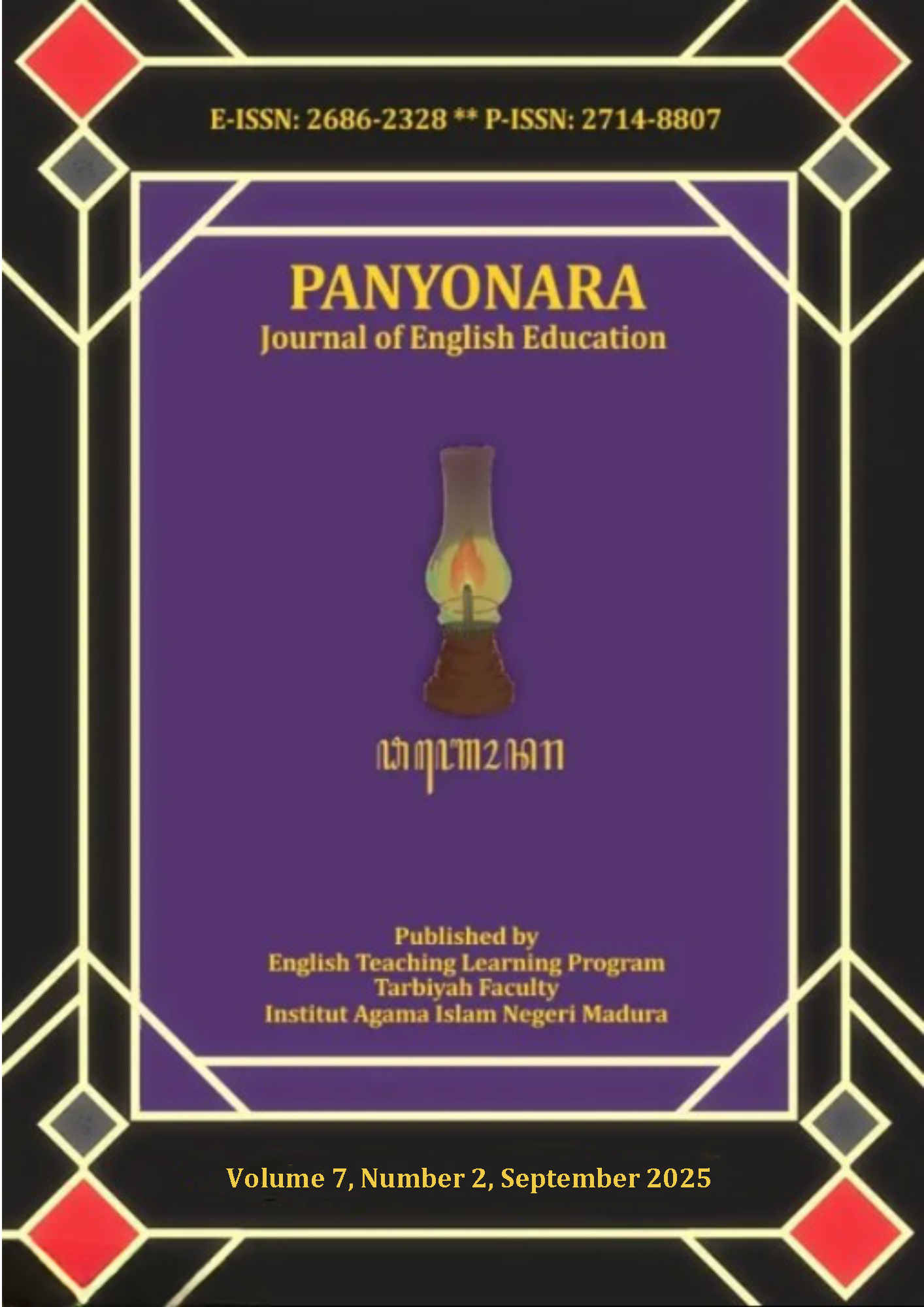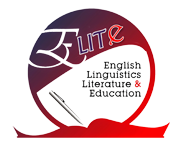Students’ Reading Anxiety and Comprehension in An Indonesian Madrasah: A Correlational Case Study
 Abstract views: 159
,
Abstract views: 159
,
 pdf downloads: 62
pdf downloads: 62
Abstract
The capacity to extract information from written texts and exhibit knowledge or comprehension of that information is known as reading comprehension. The word "anxiety" is vague and difficult to define and describe in a straightforward statement. Feelings of unease, dissatisfaction, self-doubt, apprehension, or worry are frequently linked to anxiety. The objective of this research is to investigate the correlation between student’s anxiety and reading comprehension. This research employs quantitative correlational study, with 54 samples of students. The analysis method uses adapted FLRAS and reading comprehension test. Students' anxiety levels and their reading comprehension achievement had negative association of -0.407, according to the research's statistical analysis. This correlation's N.Sig value of.002 (less than 0.05) indicated that it was also statistically significant. As a result, the null hypothesis (Ho) is rejected and the alternative hypothesis (Ha) is accepted.
Downloads
References
Annura, T., Warna, D., & Sartika, E. (2024). The correlation between reading anxiety and reading comprehension achievement EFL of MAN 2 Palembang. Premise: Journal of English Education and Applied Linguistics, 13(3), 911–932. https://doi.org/10.24127/pj.V13i3.10631.
Atkinson, Rita L., et. al., Introduction to psycology, New York : Har Court
Brace Jovanich Inc.,1983
Brassell, Danny & Timothy Ransiski, Comprehension That Works.
Oceanus Drive: Shell Education, 2008
Brown, H. Douglas. Principles of language learning and teaching. New
York : Addison Wesley Longman, inc, 2000
Chakrabarti, Anupama and Madhumala Sengupta, Second Language
Anxiety and Its Effect on achievement In The Language, (Vol 12 : 8 August 2012)
Clouse, Barbara Fine. The Student Writer. New York: Mc-Graw Hill, 2004
Grabe, William and Fredricka L. Stoller. Teaching and Researching Reading, Second Edition. Edinburgh: Pearson Education, 2011
Greenberg, Jerrold S. Comprehensive Stress Management. New York: McGraw Hill companies, 2006
Creswell, John W. Educational Research: Planning, Conducting, and
Evaluating Quantitative and Qualitative Research. Third Edition, New Jersey: Pearson Parantice Hall, 2008
Harmer, Jeremy.2007. The Practice of English Language Teaching. New York : Longman
Jeanne, E.O., Anderman E,M., and Anderman, L.2017. Educationa Psychology, Developing Learners. England: Pearson
Laksmi, The Effectiveness of Reading Habit Promotion in Public
Libraries of DKI Jakarta Province. ICOLIS Journal, 2007
Lewin, Larry. Paving the Way in Reading and Writing. San Fransisco : Jossey- Bass a Willey Impint, 2003
McDonough, Jo and Christopher Shaw. Materials and Method in ELT: Second Edition . Malden: Blackwell Publishing, 2003
Neneng Suryati, The Correlation between Students’ Anxiety and Their Achievement in Reading Comprehension, Skripsi S1 Fakultas Imu Tarbiyah dan Keguruan UIN Jakarta, 2009
Ormrod, Jeanne Ellis. Educational Psychology: Developing Learner. Boston: Pearson Education Inc., 2011
Passer, Michael W and Ronald E. Smith. Psychology: The Science of Mind and Behavior, Second Edition. New York: McGraw-Hill, 2003
Peraturan Mentri Pendidikan Nasional Republik Indonesia, Standar
Kompetensi Lulusan Untuk Satuan Pendidikan Dasar dan Menengah, Nomor 23, 2006
Riduwan and Sunarto, Pengantar Statistika untuk Penelitian Pendidikan, Sosial, Ekonomi,Komunikasi dan Bisnis, Bandung: Alfabeta, 2011
Savage, John F and Jean F Mooney, Teaching Reading to Children with Special Needs. Boston: Allyn and Bacon, Inc, 1997
Snow, Chaterine. Reading for Understanding : Toward a Research and
Development Program in Reading Comprehension . RAND, 2002
Subasi, Gonca. What Are the Main Sources of Turkish EFL Students’ Anxiety in Oral Practice?, Turkish Online Journal of Qualitative
Inquiry, Anadolu University, 2010
Yoshiko Saito, et. al., ‘Foreign Language Reading Anxiety’, The Modern Language Journal, 83.Blackwell Publishing (1999), p. Pp. 205-20
The journal uses an Open Access policy under a Creative Commons Attribution-NonCommercial 4.0 International License. Authors who publish with this journal agree to the following terms:
- Authors retain copyright and grant the journal right of first publication with the work simultaneously licensed under a Creative Commons Attribution License that allows others to share the work with an acknowledgment of the work's authorship and initial publication in this journal.
- Authors are able to enter into separate, additional contractual arrangements for the non-exclusive distribution of the journal's published version of the work (e.g., post it to an institutional repository or publish it in a book), with an acknowledgment of its initial publication in this journal.
- Authors are permitted and encouraged to post their work online (e.g., in institutional repositories or on their website) prior to and during the submission process, as it can lead to productive exchanges, as well as earlier and greater citation of published work.
















